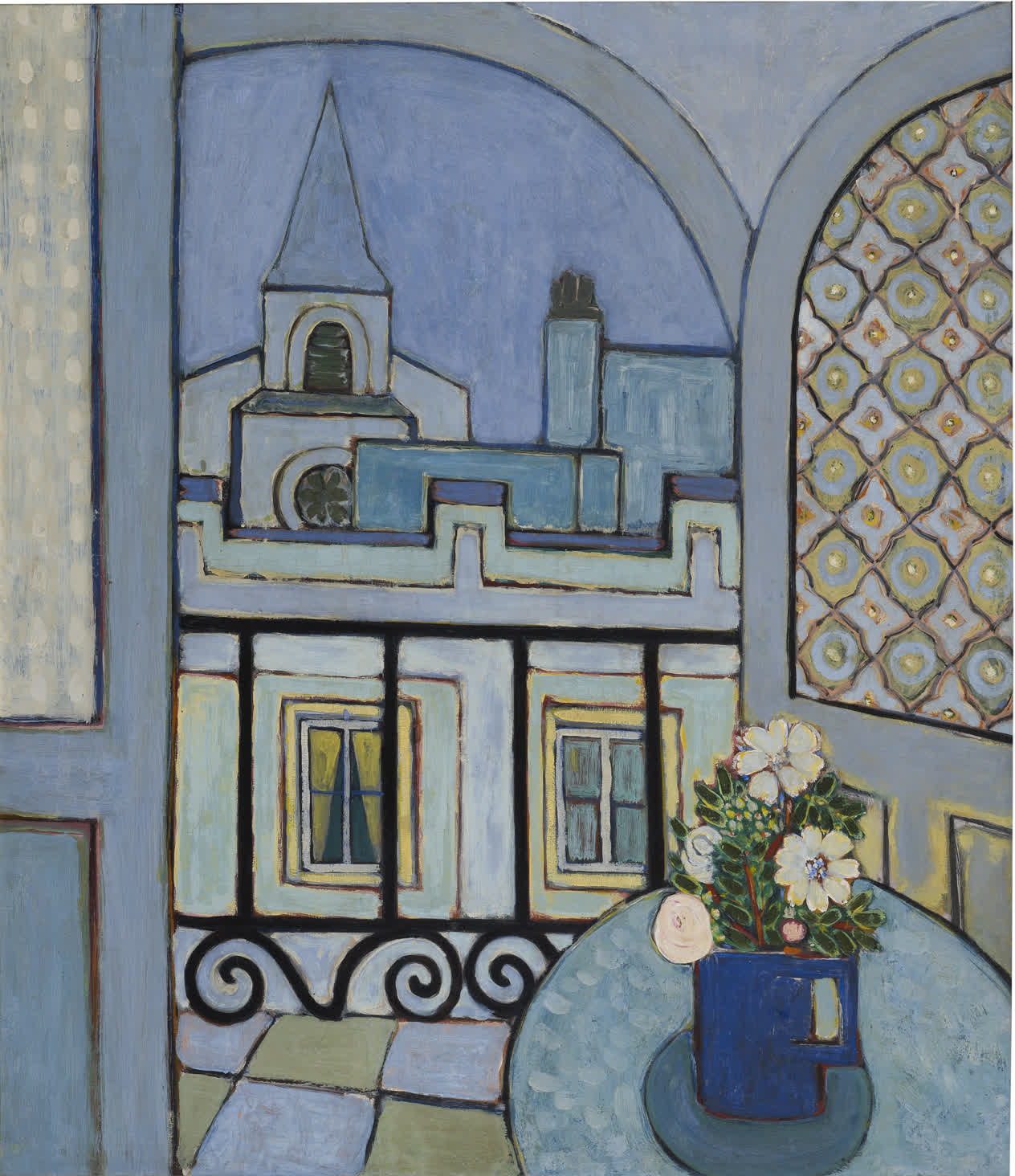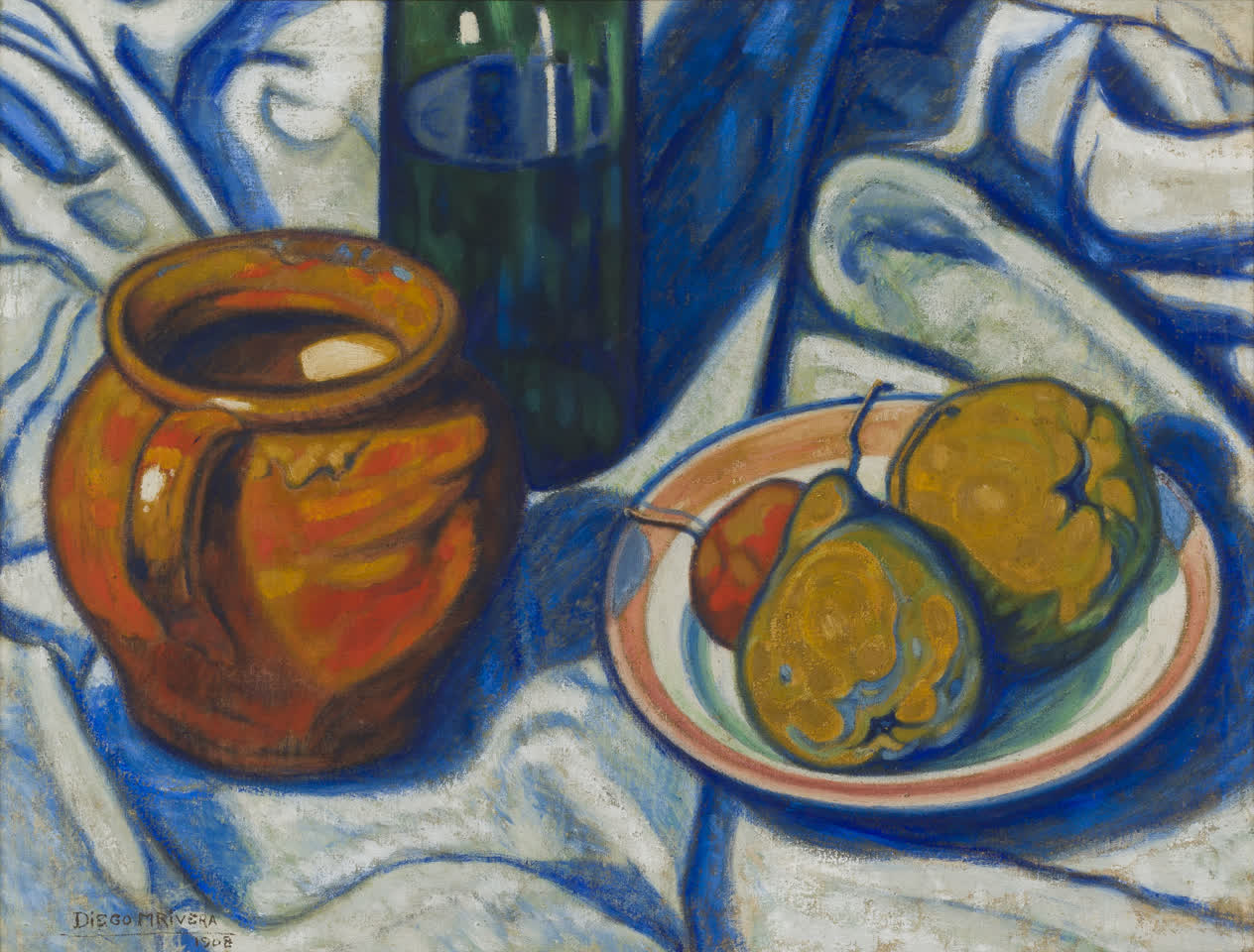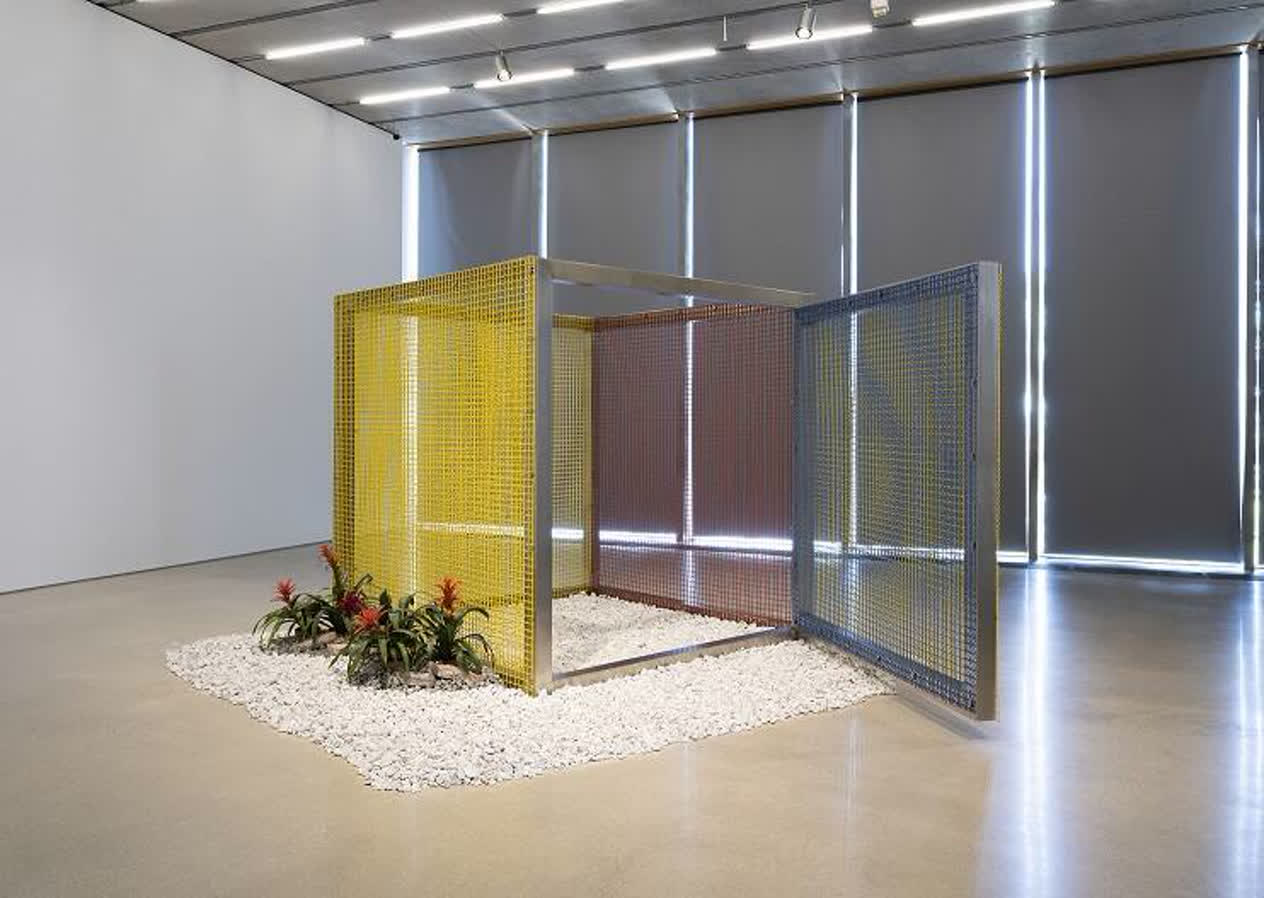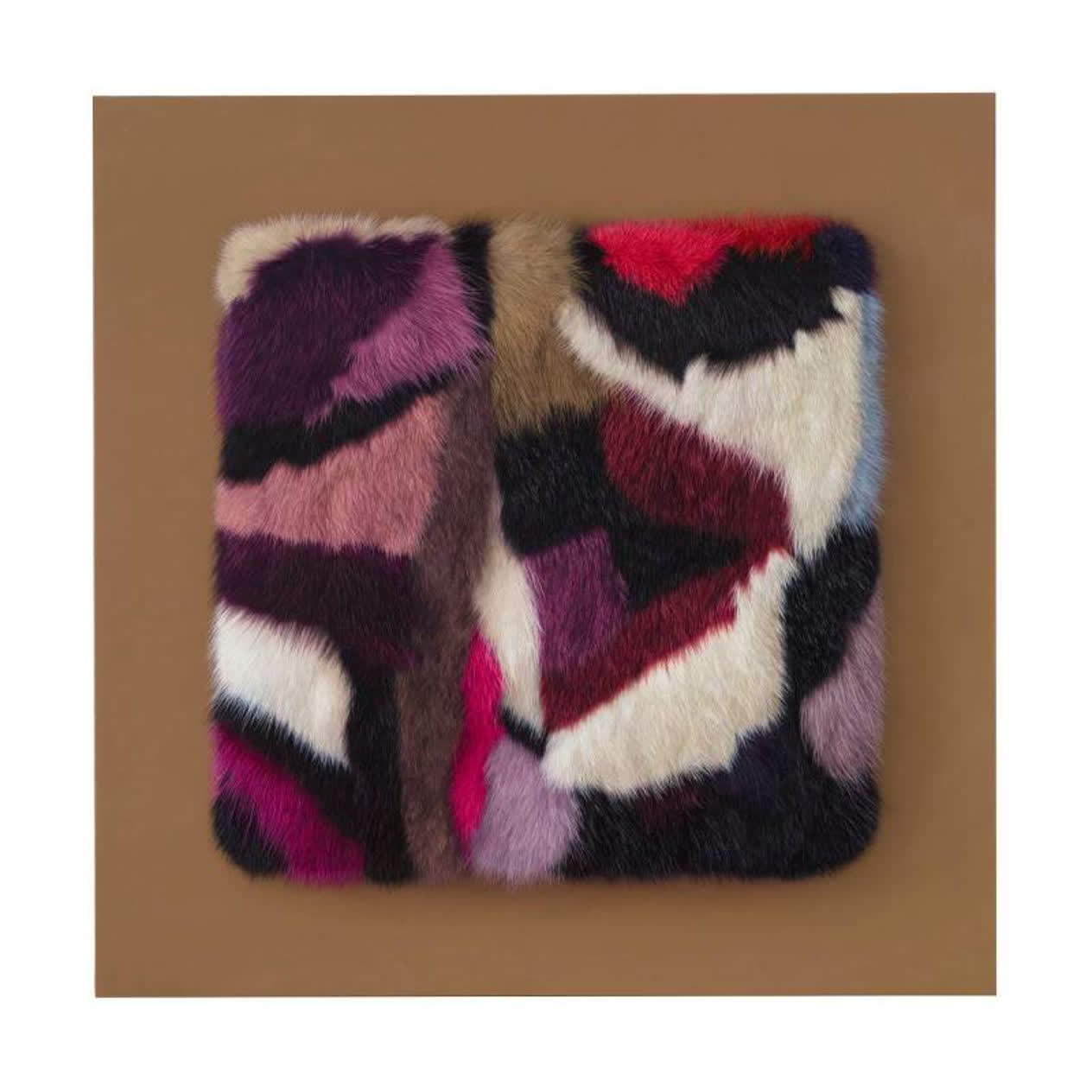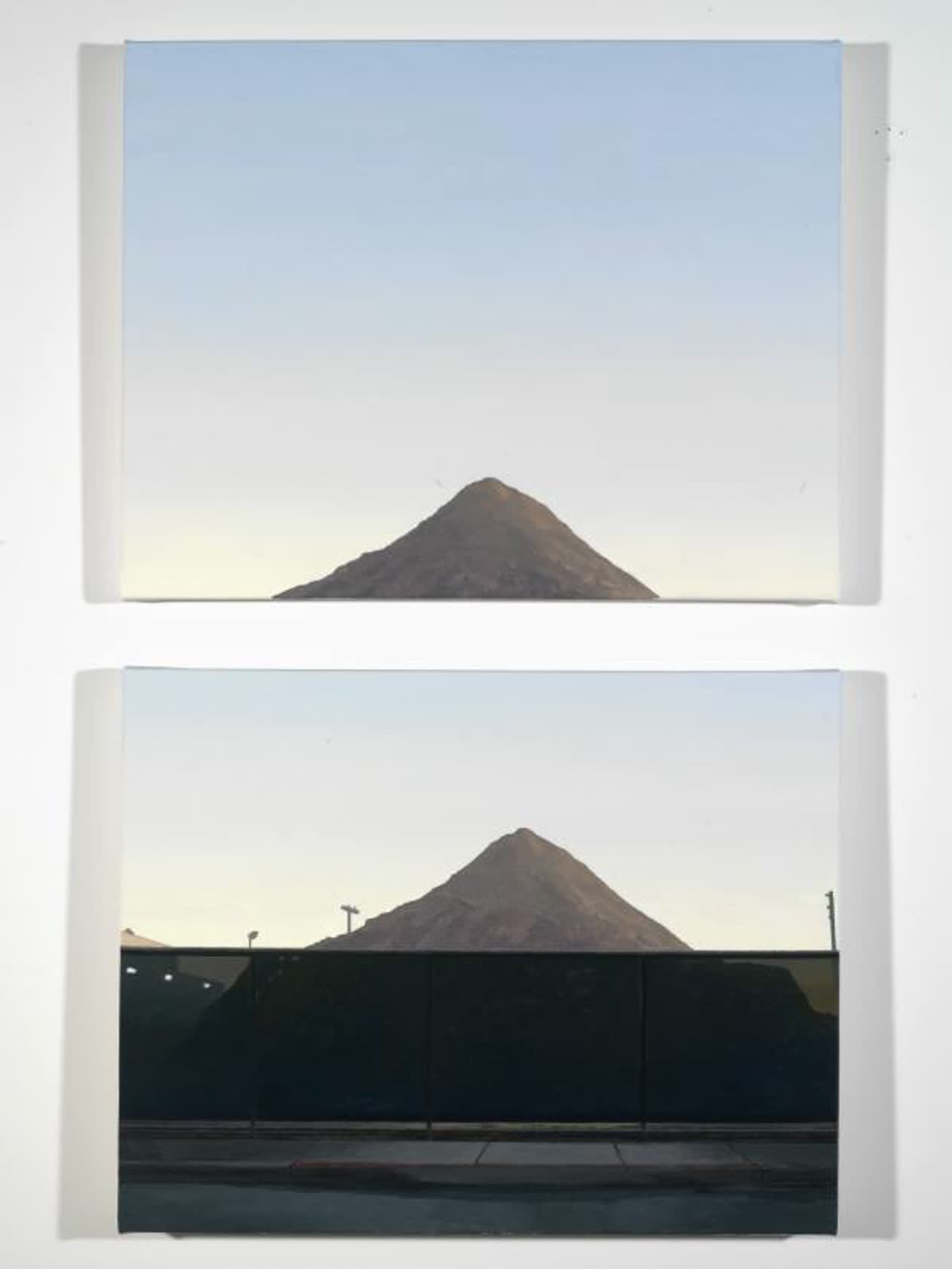José Bedia Isla venado (Deer Island) 2006
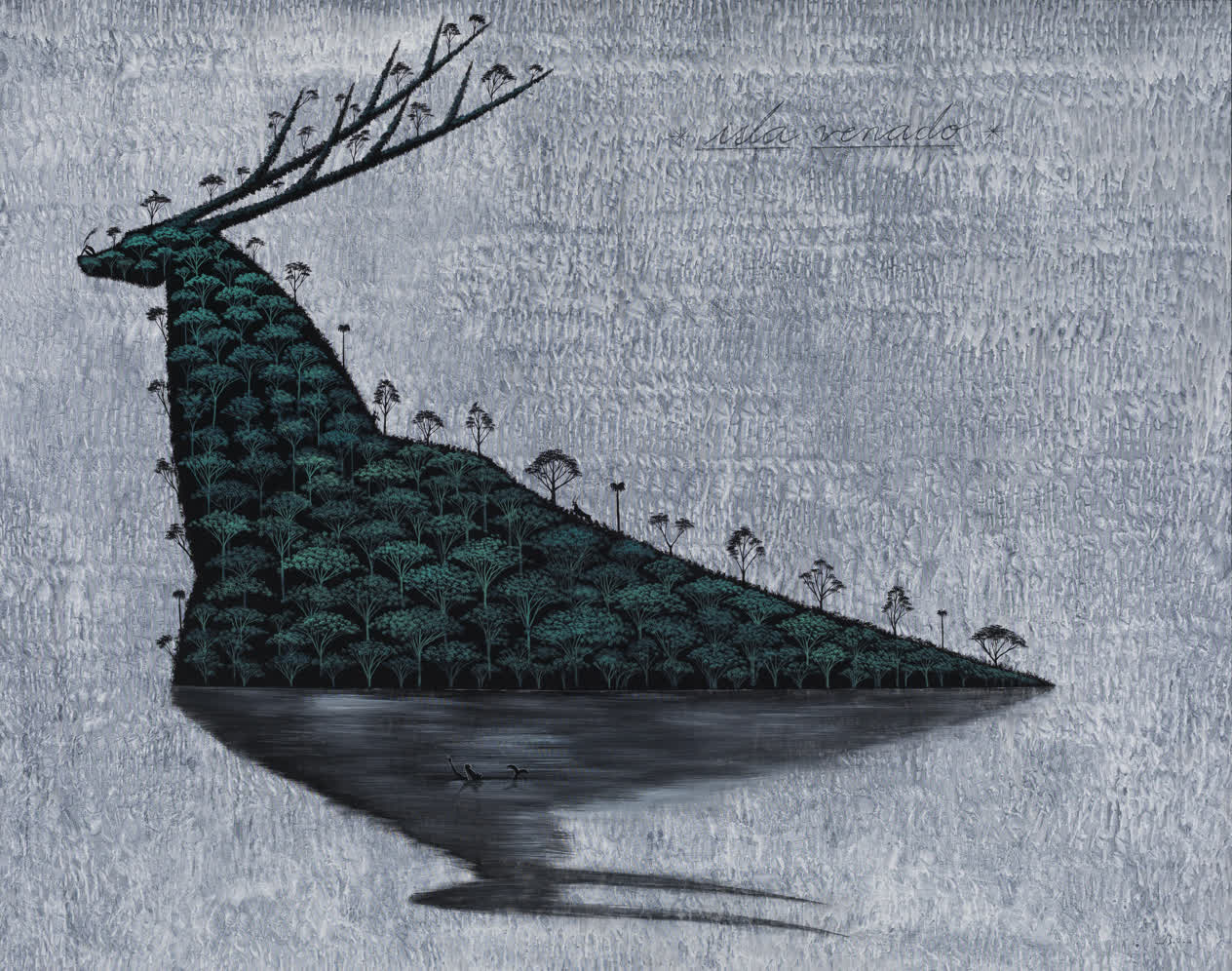
© José Bedia

José Bedia’s work is rooted in the Afro-Cuban religion Palo Monte, of which he is an initiated practitioner. Bedia often combines imagery and narratives drawn from Palo Monte with elements of the southwestern Native American spiritual traditions that he has long studied. Many of his works also reference the experience of migration, suggesting some faraway place or the pain of separation from loved ones. In Isla venado (Deer Island), Bedia presents the uncanny image of a densely forested island in the form of a deer swimming in a choppy blue ocean. The image exemplifies Bedia’s unique brand of magic realism, as well as his frequent use of animals as symbols that convey mysterious stories. Many adherents of Afro-Cuban religions believe that the deities they worship (known as orishas) disguise themselves as animals or features of the landscape when they visit the human realm. In line with this tradition, the animals that appear in Bedia’s work (which include horses, foxes, rabbits, and lions in addition to antelopes and deer) are often hybrid creatures, half human or, in this case, half land mass. Within Afro-Cuban lore, deer are thought to be highly sentient beings with the ability to tell the future. They are also often cast as victims of humans’ evil ways, and are used to signify movement, migration, transition, or transformation. In Bedia’s hands, this blend of references adds up to a poetic interplay between his spiritual beliefs and his emotions about the island home that he escaped from in 1990.
Identification
Title
Isla venado (Deer Island)
Production Date
2006
Object Number
2019.204
Credit Line
Collection Pérez Art Museum Miami, gift of Sergio García-Granados
Copyright
© José Bedia
https://www.pamm.org/en/artwork/2019.204
Copy artwork link
Physical Qualities
Medium
Acrylic on canvas
Dimensions
70 1/2 x 90 inches
Visual Description
Jose Bedia’s Isla Venado is an acrylic painting on canvas. It measures six feet tall by a little over seven and a half feet wide. It hangs in a landscape orientation, meaning that the longer side runs parallel to the floor.
The main subject of the painting is an image of a stag, or an adult male deer, seen in profile. The animal is painted as a black silhouette and is facing the left side of the canvas. The stag’s head is visible in the upper left corner of the painting. Its nose and mouth project to the left, like the muzzle of a dog. Extending behind the head are the two long, parallel sets of antlers, sloping up toward the top of the canvas.
The stag’s neck extends beneath the head and widens out like an overturned funnel. The neck of the animal then flattens out further to show the top of the deer’s back. The rest of the deer’s body is not visible. It looks like it is rising out of a lake or some other body of water, and the rest of the animal remains submerged. The stag’s reflection is painted underneath the main figure. The reflection is painted in blended and smudged brushstrokes, that mimic moonlit reflections on water’s surface. Inside the reflection is the small white outline of a mermaid, with her head, breasts, and fishtail peeking out of the water’s surface.
The expanse of the deer’s black body is covered with thin green trees, with leaves branching out in a fan like pattern at the canopy. The trees repeat all over the body of the deer, covering its entirety and projecting upward from the deer’s blackness, like how they would look growing on an island or other landmass, seen from a distance.
The black outline of the deer contrasts sharply against the grey background of the painting. The background is painted in a semi-transparent technique, that gives it a fluid, almost watery appearance. On the end of the stag’s nose is a small, horned figure. This figure is sitting with its knees bent in front of it, and has two horns projecting back from his head, much like the stag he sits upon.






